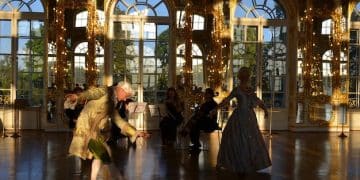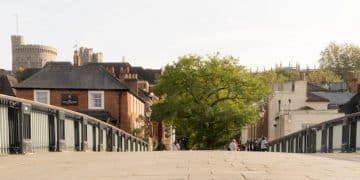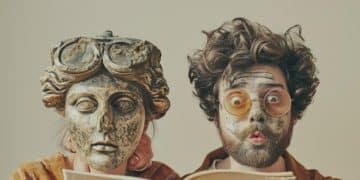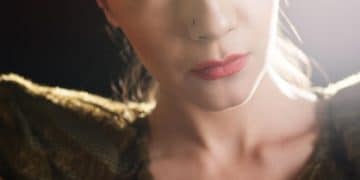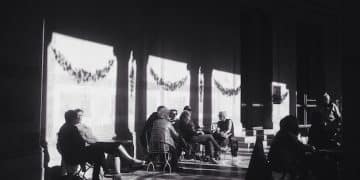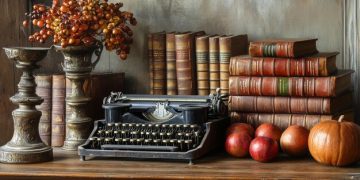The Art of Historical Detail: Period Dramas’ Accuracy Unveiled
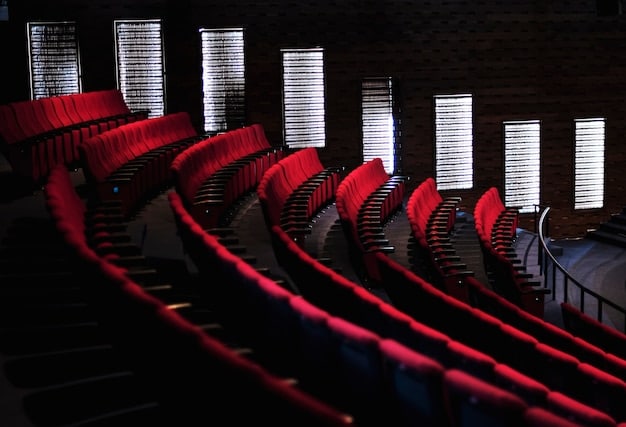
The art of historical detail in period piece dramas involves meticulous research, costume design, set decoration, and cultural accuracy to recreate the past with a high degree of authenticity.
Ever wondered how period dramas transport us back in time so convincingly? The magic lies in the art of historical detail. Let’s explore how these productions painstakingly recreate the past with remarkable accuracy, examining the dedication to sets, costumes, dialogue, and cultural representation that brings history to life on screen.
The meticulous research behind period dramas
Creating a compelling period drama begins long before the cameras roll. It starts with extensive and meticulous research. Historians, consultants, and experts in various fields are brought on board to ensure authenticity. This section explores the depth of research required to create a believable historical world.
Consulting with historians
The accuracy of a period drama hinges on the expertise of historians. These professionals provide invaluable insights into the social, political, and cultural norms of the era. They scrutinize scripts, set designs, and costumes to ensure they align with historical facts.
Historians often help avoid anachronisms—details that are out of place in the historical period. Their guidance ensures that the stories being told are rooted in reality, even as they explore fictional narratives.
Primary source analysis
Beyond consulting with experts, production teams delve into primary sources. These include letters, diaries, newspapers, and artifacts from the period. Primary sources offer firsthand accounts and tangible evidence of how people lived, what they wore, and what they believed.
By analyzing these original materials, filmmakers can recreate a more nuanced and authentic depiction of the past.
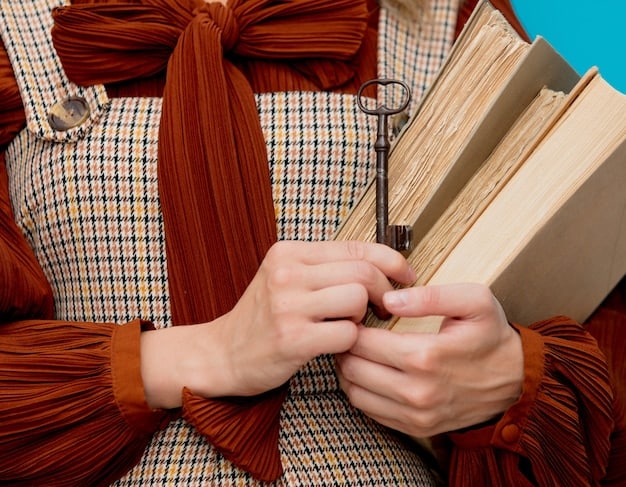
Examples of historical accuracy in dramas:
- Costume accuracy: Consulting fashion historians to ensure clothing styles, fabrics, and accessories are true to the period.
- Set design: Recreating buildings, furniture, and everyday objects based on historical records and archeological findings.
- Dialogue and language: Incorporating period-appropriate language, slang, and accents, often with the help of linguists and dialect coaches.
- Cultural practices: Accurately depicting social customs, etiquette, and daily routines based on historical accounts.
Meticulous research forms the backbone of any successful period drama, ensuring that the on-screen portrayal aligns with historical reality to the greatest extent possible.
Costume Design: Weaving Historical Accuracy into Every Thread
Costumes are vital in bringing the past to life on screen. They reflect not only the fashion trends of the time but also the social status, personality, and circumstances of the characters wearing them. Let’s explore how costume design helps to construct this visual tapestry.
Sourcing authentic materials
One of the significant challenges in costume design is sourcing authentic materials. Modern fabrics and dyes often differ significantly from those used in the past. Costume designers go to great lengths to find or recreate textiles that match the historical period.
This may involve working with specialized weavers, dyers, and textile artists who can replicate historical techniques and materials.
Attention to detail
The devil is in the details, as they say, and this is certainly true for costume design. Every element, from the cut of a garment to the type of buttons used, must be historically accurate. This requires meticulous research and a deep understanding of the period’s fashion conventions.
Costume designers often consult fashion plates, portraits, and surviving garments from the era to ensure every detail is correct.
Reflecting Social Status
Costumes are more than just clothing; they provide a window into the social hierarchies of the past. The fabrics, colors, and styles worn by different characters reflect their status, wealth, and position in society.
- Fabrics and embellishments: The richness and quality of the fabrics used, as well as the extent of embellishments such as embroidery and lace, indicate wealth and status.
- Color symbolism: Colors held different meanings in different historical periods. Costume designers use color to convey information about a character’s personality or social standing.
- Style and silhouette: The cut and silhouette of a garment can reflect a character’s adherence to or rebellion against social norms.
Costume designers play a crucial role in achieving historical accuracy in period dramas. By paying close attention to materials, details, and social context, they create costumes that enhance the authenticity and impact of the story.
Set Decoration: Building Authentic Worlds
Another cornerstone of historical dramas is the set design. The art of historical detail comes alive when set decorators meticulously recreate the spaces in which characters lived. Let’s dive into how these authentic worlds are constructed.
Sourcing authentic props
Set decorators face the challenging task of sourcing authentic props. This can be particularly difficult for periods where everyday objects are rare or no longer exist. Sourcing authentic props involves combing through antique markets, private collections, and museums.
In some cases, props must be custom-made to match historical specifications. This requires skilled artisans who can replicate furniture, tableware, and other items from the period.
Reproducing historical Interiors
Recreating historical interiors involves more than just finding the right props. Set decorators must also consider the layout, colors, and textures of the spaces they are depicting. Reproducing historical interiors often involves studying architectural plans, paintings, and photographs from the period.
Set decorators work closely with production designers and art directors to ensure that the sets align with the overall vision of the film or television series.
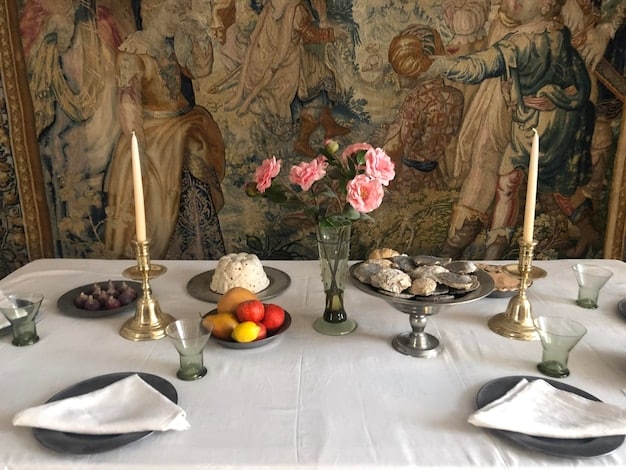
Elements of Set design include:
- Furniture styles: Replicating furniture designs from the period, including chairs, tables, beds, and cabinets.
- Wallpapers and textiles: Using historically accurate wallpapers and textiles to decorate walls, windows, and furniture.
- Lighting: Incorporating lighting fixtures that match the period, such as chandeliers, sconces, and oil lamps.
- Artwork: Including paintings, sculptures, and other artworks that reflect the artistic tastes of the era.
By focusing on authentic props, historical interiors, and geographical accuracy, set decorators play a vital role in creating believable and immersive historical worlds for period dramas.
Cultural Accuracy: Portraying Lifestyles and Customs
Cultural accuracy is pivotal in giving authenticity to a period drama. How people lived, interacted, and behaved is just as important as the look of the sets and costumes. This part of our exploration focuses on portraying lifestyles and customs.
Social Etiquette
Every historical period has its own set of social customs and etiquette rules. These dictate how people interact with one another, from the way they greet each other to the way they conduct business.
Period dramas often pay close attention to these details, ensuring that characters behave in a manner that is consistent with the norms of the time. This can involve researching etiquette manuals, conduct books, and other historical sources.
Daily Life
Portraying daily life accurately involves depicting the everyday routines, habits, and activities of people in the period. This can include everything from what people ate to how they spent their leisure time.
Period dramas often focus on these details to create a sense of realism and immersion. By showing audiences what it was like to live in the past, they can make the stories more relatable and engaging.
Avoiding Modern Bias
One of the most significant challenges in achieving cultural accuracy is avoiding modern bias. Filmmakers must be careful not to impose contemporary values, attitudes, and beliefs on characters from the past.
This requires a deep understanding of the historical context and a willingness to challenge one’s own assumptions. By avoiding modern bias, period dramas can offer a more nuanced and authentic portrayal of the past.
Practices to incorporate effective cultural representation:
- Depicting Accurate Religious Practices: Accurately depicting religious rituals, ceremonies, and beliefs.
- Recreating Traditional Foods: Featuring traditional foods and cooking methods.
- Representing Social Interactions: Accurately representing social interactions and relationships.
Depicting lifestyles and customs is essential for creating authentic and immersive period dramas, and meticulous attention to social etiquette, daily life, and avoiding modern bias can enhance cultural accuracy, adding depth and meaning to historical narratives
Language and Dialogue: Speaking the Language of the Past
The way characters speak can significantly affect the authenticity of a period drama. Language and dialogue must reflect the vocabulary, grammar, and idioms of the historical period being portrayed. Let’s see how filmmakers approach this crucial element.
Using Period-Appropriate Vocabulary
Vocabulary evolves over time, and words that are common today may not have existed in the past. Period dramas must use vocabulary that is consistent with the historical period. This requires extensive research and a keen ear for language.
Filmmakers often consult dictionaries, glossaries, and other linguistic resources to ensure that their characters are speaking the language of the past.
Incorporating Historical Slang and Idioms
Slang and idioms add flavor and authenticity to dialogue. They reflect the cultural context and the everyday speech patterns of people in the past. Incorporating historical slang and idioms can be challenging, as these expressions are often obscure or poorly documented.
Filmmakers must rely on primary sources, such as letters, diaries, and literature from the period, to identify and incorporate these expressions into their scripts.
Accents and Dialects
Accents and dialects can reveal a character’s social class, regional origin, and level of education. Period dramas often use accents and dialects to add depth and authenticity to their characters.
This requires working with dialect coaches who can help actors master the nuances of historical speech patterns. Dialect coaches also ensure that the accents and dialects are consistent with the historical period and the geographical location being portrayed.
Critical factors for accurate speech:
- Studying Historical Texts: Examining letters, diaries, and other historical documents.
- Working with Linguists: Consulting with linguists to understand the nuances of historical language.
- Training Actors: Training actors to speak with the appropriate accents and dialects.
Language and dialogue are essential for bringing historical characters to life, and Using period-appropriate vocabulary, incorporating historical slang and idioms, and paying attention to accents and dialects can capture the nuances of historical speech.
Addressing Historical Accuracy Controversies
Despite all efforts to achieve historical accuracy, period dramas can still face criticism and controversy. Certain artistic, narrative, and character license is taken which can lead to controversy. The key thing is how filmmakers deal with that.
Balancing Accuracy and Entertainment
Period dramas are a form of entertainment, and filmmakers must balance the need for historical accuracy with the desire to tell a compelling story. Some artistic liberties are acceptable, while others may be seen as egregious distortions of the past.
Filmmakers must be mindful of these tensions and strive to strike a balance between accuracy and entertainment.
Addressing Criticism
Period dramas often face criticism from historians, cultural critics, and audience members who feel that they have misrepresented the past. Filmmakers must be prepared to address these criticisms in a thoughtful and respectful manner.
Honest, open dialogue and transparency can help mitigate controversies and demonstrate a commitment to historical accuracy. Acknowledging mistakes and committing to improve is crucial to maintaining good standing with critics and viewers alike.
Learning from Mistakes
Every period drama is a learning experience, and filmmakers can learn from their mistakes and strive to improve future productions. This involves conducting thorough research, consulting with experts, and being receptive to feedback from audiences and critics.
In this way, filmmakers can continue to hone their craft and create period dramas that are both entertaining and historically accurate.
- Acknowledging Artistic License: Clearly stating where artistic liberties have been taken for dramatic purposes.
- Engaging with Historians: Consulting with historians on set to clarify points of confusion.
- Addressing Concerns Publicly: Actively addressing factual misrepresentations.
While filmmakers try balancing accuracy and entertainment in historical narratives, it remains essential to engage with historians, address the concerns, and learn from mistakes. Period dramas can honor the past while creating compelling stories.
| Key Aspect | Brief Description |
|---|---|
| 📜 Research Depth | Extensive historical research with expert consultants to ensure accuracy. |
| 🧵 Costume Design | Authentic sourcing and detailed replication of historical garments. |
| 🏠 Set Decoration | Meticulous recreation of historical spaces with authentic props. |
| 🗣️ Cultural Accuracy | Realistic portrayal of historical social interactions and traditions. |
FAQ
▼
Costume designers often source fabrics from specialty textile mills, antique markets, or create custom-made textiles to match the period’s specifications. They also consult fashion plates and surviving garments.
▼
Historians are consulted to ensure the accuracy of social, political, and cultural norms of a period. They scrutinize scripts, set designs, and costumes to align with historical facts and avoid cultural inaccuracies.
▼
Set decorators often scout for props at antique markets, private collections, and museums. They ensure furniture, tableware, and everyday items match those of the intended historical period.
▼
Language precision can create a sense of immersion, and language reflects the vocabulary, idioms, and common language of a period. Accurate language makes period dramas more credible.
▼
Mixing entertainment with accuracy leads to tension that forces filmmakers to take creative license. Another issue is avoiding modern bias: the projection of contemporary ideals onto a historical period.
Conclusion
The art of historical detail in period dramas is a complex tapestry woven from meticulous research, expert consultations, and creative artistry. While perfection may be unattainable, the commitment to authenticity elevates these stories, bringing history to life in a way that entertains, educates, and inspires.
